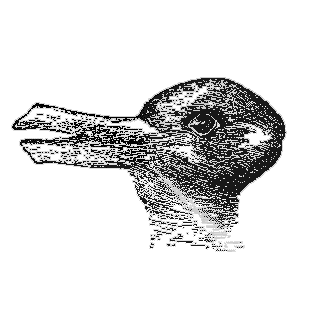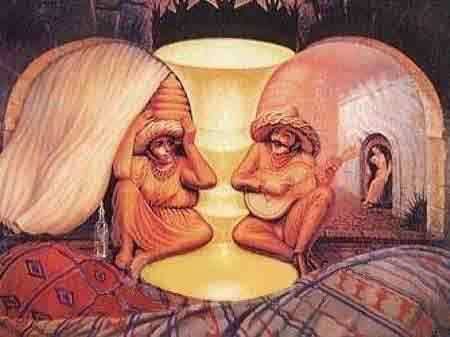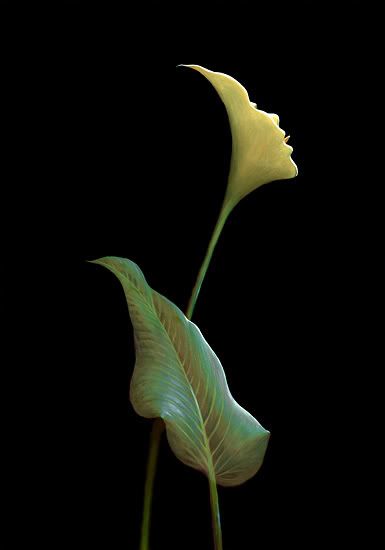I’ve always been terrible at science – something I blame on my 10th grade biology teacher (that’s a whole long boring story). But recently I’ve been pretty intrigued by what we’re learning about how the brain works. It could be that I have just enough knowledge to be dangerous because I pretty much stick to layman’s interpretations of this information rather than digging in to the actual science. But I’m more interested in the overview anyway.
The whole distinction between how our left and right brains work is the part that has most fascinated me. From the amazing speech that Dr. Jill Bolte Taylor (video link) gave at a TED conference as well as other sources, I’ve learned that the right brain is responsible for taking in all of the stimuli that we gather from our senses. And the left brain is responsible for sorting and naming so that we can make sense of it all.
The tricky part is that our senses and our right brains take in way more stimuli than we can sort. So the left brain has to develop some short-cuts to help us with that. One of the ways it does this is by sorting things into patterns that it has seen before. These short-cuts are what I’m calling “invisible thinking.” Our brains place incoming stimuli into previously developed patterns so that we don’t have to spend so much time analyzing and sorting through the myriads of data that we take in. Of course, the problem with this is that when we want to change our invisible thinking, that can be difficult to do unless we examine the patterns we’ve incorporated.
Some of this sorting process is what’s at work with visual stimuli when we talk about the whole field of optical illusions. If you want to have some fun, visit this site, which has 81 different illusions to play with. There’s even one that results in an approaching Buddha.
This is one of the most famous illusions. What do you see?

Is it a duck or a rabbit? If you’re like me, one of these options is clear at first and it takes work to see the other one.
While researching all of this, I came across the art work of Octavio Ocampo. He not only captures the illusions, he does so with beauty and message as well.

Forever Always

Family of Birds

Sunlight’s Kiss
What this art so beautifully demonstrates is that what we think we see at first is not all that’s there. Our invisible thinking, or what we do at first glance, can leave out so much that is available to see and know. It takes time and work to get beyond our invisible thinking; something that’s often not easy in our fast-paced world. But taking a second look at things is so often worth the effort.
Just as an aside, I’ll be gone the next two Sundays. But as Arnold say…”I’ll be back.”

28 comments
Skip to comment form
Author
just for Docudharma.
http://www.magiceye.com/
and not cool
http://www.google.com/search?h…
maybe doesn’t.
some of my “invisible thinking” also has to do with the “invisible world.” if i had a better memory, i would site some quotes from the book Centering, which i think apply, maybe, maybe not.
some of us follow invisible rhythms, say for example, the seasons, with as much consciousness as we can bring to the task, which varies by, uh, season. 🙂 i have no idea what the results of those associations are in actual, concrete terms, but it is a way of allowing images in to influence behavior, mood, contemplation, action.
i decorate my living space with certain shapes, a mixture of round and square, some spiral, mostly, with a certain amount of asymmetrical design to both suggest balance and suggest imbalance. i keep bells around because they have a personal meaning that i want to be reminded and influenced by without thinking, just via sight and repetition.
also, exploring internal patterns, usually after the fact, can also quite be enlightening, sort of like the Project Implicit test. in the category of “too soon old, too late smart” i can see what i’ve reacted to that didn’t exist, was nothing but a projection of my own invisible thinking. that’s always so much fun. i highly recommend it!
I like the part about taking in way too much stimuli. I find if my head is constantly soaking in images and crap generated by mainly TV my creative part does not bother to function. On the other hand if I isolate, creativity has no motivation other then pleasing my ego. Art for
art’s sake seems boring. Somewhere lies the balance.
Rerouting the clogged wiring is hard work. Habit’s, patterns familiarity, ingrained by outside and inside information feel safer, seem easier. The mechanics are interesting, our brains can find new paths, I read somewhere it takes 6 weeks for it to establish new patterns. Sometimes you have to crawl out of the wreckage your brain and you have made.
I saw rabbit, then duck.
anyway….I found this interesting:
Nothing we see is anything we’ve seen before but yeah, our brains do that. It’s some sort of grown up thing. Kids don’t have this and sometimes I think it’s sad that we lose the ability to see the newly created universe, constantly changing from second to second.
On the plus side, it allows us to hold jobs, shop for food and so forth.
Can’t we all just get along?
Some people with severe epilepsy have the nerve fibers which connect the left & right brain severed. It’s called corpus callostomy or split brain. Normally, things which you detect in your right field of vision are interpreted by the left hemisphere and vice versa. Our language centers are in the left hemisiphere, so in these patients, if you display a word or picture in the right field of vision they are able to name it. But if you put a word or picture in the left field of vision they can’t name it – but they still “see” it. Check out this guy…